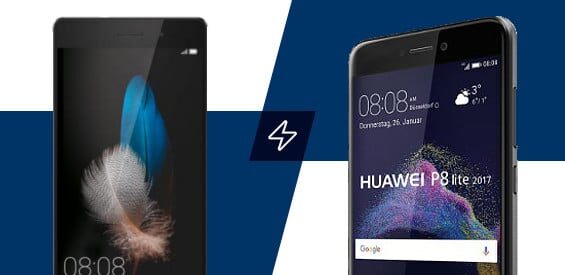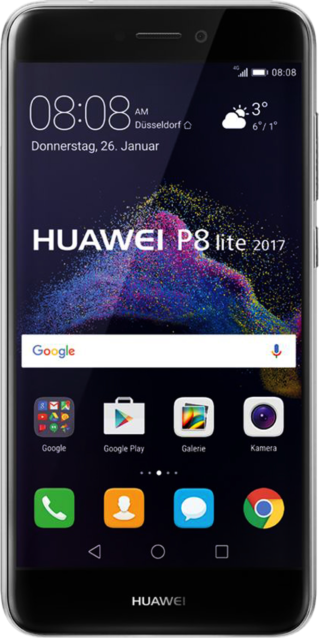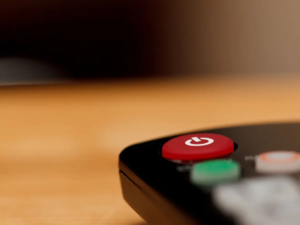The smartphone manufacturers are upgrading their middle class and getting ready for the battle for customers in 2017: Huawei is now throwing its hat into the ring with the new edition of the Huawei P8 Lite. New technology, some of which outperforms the Huawei P9 Lite, was put into a new case and a smaller price was stuck on it. But what is the difference between the two? The editorial team of inside-digital.de shows the differences in detail.

TABLE OF CONTENTS
1 Design comparison – fancier, rounder, more boring
2 Display – bigger is better
3 Features and performance – New processor and more card memory
4th Camera – more and fewer pixels
5 Software – Android and EMUI
6th Battery – massive plus
7th Conclusion – on the trail of Samsung
The new middle class, be it the HTC U Play , the Samsung Galaxy A3 and A5 (2017) or now the Huawei P8 Lite (2017), has been massively upgraded in 2017 and equipped with some exciting features from the upper class. The trendsetter: Samsung’s A series, which boasts IP certification and a rich equipment package. Now HTC and Huawei havefollowed and also presented highly interesting devices in the high-selling middle class. At the end of the day, the winner in this competition could be the consumer, as the models from the three established manufacturers that have just been presented may cause them to wonder whether one really has to wait for the top models or whether the middle class is also completely sufficient for the ambitious user.
Huawei’s contribution to this trend is an old friend in a new look: the Huawei P8 Lite (2017) inherits the model from 2015 and comes as an improved version of the P9 Lite from last year. The comparison of the Huawei P8 Lite and the Huawei P8 Lite (2017) does not evaluate, but puts the technical data in relation to each other. A final assessment of which smartphone is better can only be achieved by a detailed test of the Huawei P8 Lite (2017).
DESIGN COMPARISON – FANCIER, ROUNDER, MORE BORING
The two P8 Lite differ from each other in a few ways: The new P8 Lite (2017) is more rounded by Huawei and has fewer individual elements. The corners were equipped with larger radii and rounded glass towards the edges was used on the front. The frame was also made more organic and comes across as less technoid.
The design of the buttons has been made more neutral, which looks a bit more elegant, but also costs a little strength of character. Another recognition feature of the predecessor has been deleted: On the original Huawei P8 Lite, the upper area of the back was different in color and material. Huawei does without this in the new edition. Instead, an element comes into focus that could not be integrated into the predecessor because the technology behind it did not make it into the equipment list: The fingerprint sensor looks a bit lost on the otherwise elegant back of the Hauawei P8 Lite (2017). It is now, and here Huawei is taking the same development step as on the front, covered with glass that is rounded towards the edge.

All in all, the design of the new Huawei P8 Lite (2017) appears more self-contained and modern, but also less independent. The similarity to the two new Samsung Galaxy A models cannot be denied and so users have to concentrate on other characteristics. The development from the P8 Lite to the P8 Lite (2017) is in any case a step towards a less independent, but also more pleasing design.
DISPLAY – BIGGER IS BETTER
Huawei has put a lot of effort into the display of the two generations. While the old model still relies on a 5-inch panel with an HD resolution of 720 x 1,280 pixels, the new model not only increases the size to 5.2 inches, but also the resolution to 1,080 x 1,920 pixels. With the massive increase in resolution, the pixel density increases from almost 300 to over 400 ppi despite the larger display. This makes the display sharper and even if you look closely, individual pixels are no longer visible.
A further development has also been introduced for the edges of the display: While the Huawei P8 Lite from 2015 still had quite wide edges on the long sides of the phone, Huawei is now using a trick to make them almost completely disappear: With per se The smartphone is brought into the present with narrower edges and the rounded display protective glass supports the borderless effect again. Another advantage of the thinning glass is the feel, which takes on a pleasant pull when wiping from the edge to the center.
FEATURES AND PERFORMANCE – NEW PROCESSOR AND MORE CARD MEMORY
In terms of equipment and performance, restrictions have to be accepted compared to the top models. However, Huawei has thrown a shovel more in the oven than its
predecessor. The processor was even topped again compared to the Huawei P9 Lite : The Huawei P8 Lite (2017) uses the in-house Kirin 655, which means a good leap forward to the Kirin 620 installed in the predecessor. The graphics processor is also being upgraded. The now installed Mali-T830 MP2 has massively more power than the Mali-450 MP4 installed in 2015. The two processing units are supported in a 3 GB main memory. Here, too, 1 GB was added compared to the Huawei P8 Lite from the year before last.
With the main memory of 16 GB, everything was left as it was, but the memory expansion was adapted. With the current P8 Lite (2017), 128 GB can be added to the 16 GB internal memory using a memory card. The predecessor offers a maximum of 32 GB of room for expansion.
Not much has changed in the area of connectivity. The Bluetooth standard was raised to 4.1 and the LTE bands were expanded with band 1. The Huawei P8 Lite (2017) now transmits on the frequencies 800, 850, 1800, 2100 and 2600 with Cat. 6 and was therefore also adapted here.
CAMERA – MORE AND FEWER PIXELS
When it comes to the camera equipment, no stone was left unturned: The current Huawei P8 Lite (2017) comes to the customer with a combination of a 12 and an 8 megapixel camera for the rear and front. The version from last year offers a sensor with a resolution of 13 megapixels on the back and one with 5 megapixels on the front. A detailed test must first show how the changes affect the image quality. Presumably, however, the rear camera on the Huawei P8 Lite (2017) will show itself to be improved, as Huawei has installed the color sensor of the flagship Huawei P9 , which performed very well in the test of the P9 in combination with the black and white sensor. In the test of the Huawei P8 Lite , however, the camera was not to be sniffed at either and got 4.5 out of 5 possible stars.
SOFTWARE – ANDROID AND EMUI
A lot has happened on the software side in the past 1.5 years – even without Huawei. Google has made major improvements to its Android operating system and introduced a monthly security patch. This development does not leave its mark on the Huawei P8 Lite either: The P8 Lite (2017) is shipped from the factory with Google’s Android version 7.0 alias Nougat. The Huawei P8 Lite from last year is based on the previous version Android 6.0 Marshmallow.
But Huawei has not been idle either and has also continued to develop its own software package EMUI in recent months. The user interface, which is based on the basic operating system, has been revamped from version 4.0 to 5.0. The P8 Lite (2017) is the first smartphone from the Chinese with the latest version.
BATTERY – MASSIVE PLUS
The energy supplier of the P8 Lite was one of the few points of criticism in the test. It only achieved average performance and was not particularly convincing in the standby test. The capacity of the battery plays a decisive role here alongside the energy hunger of the display and the processor. Against this background, it will be extremely exciting in the test of the Huawei P8 Lite (2017) whether the capacity of the now 3,000 mAh battery is sufficient to compensate for the increased demands of the smartphone.

Compared to the old model, Huawei has massively increased the capacity by 800 mAh – a considerable upgrade in the smartphone sector. However, the display and also the processor will take their toll. No other changes are introduced here. The battery is still not exchangeable and wireless charging is still not possible. In addition, there is the unchanged USB version 2.0, which should also make the charging time quite comparable
CONCLUSION – ON THE TRAIL OF SAMSUNG
As with the comparison of the Samsung Galaxy A3 (2017) with its predecessor and the comparison of the Galaxy A5 (2017) with its predecessor , this comparison also makes it clear that the manufacturers want to transport the chic of the top models into the middle class. Both manufacturers succeed in doing this well.
The difference: Huawei is not bringing a top feature from its flagship P9 family to its mid-range P8 Lite (2017). The double camera would have offered itself here. Nevertheless, Huawei has managed a massive upgrade over the Huawei P8 Lite. When you look at the price, your eyes open again: The introductory price of the new model is 10 euros below the original P8 Lite. This means that the P8 Lite (2017) costs just under 240 euros new and without the mandatory price drop shortly after its market launch. This puts you at a very good price-performance level even in comparison to the competition and at least on paper.


